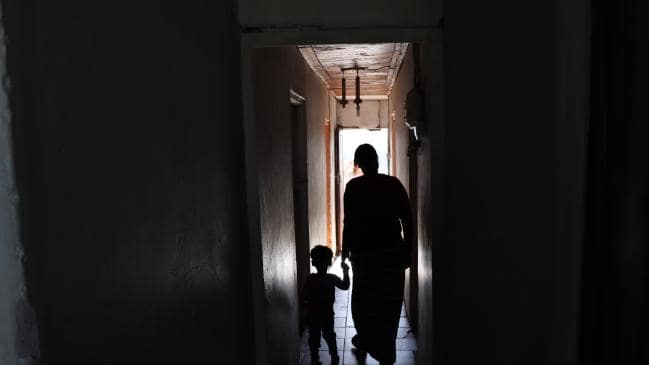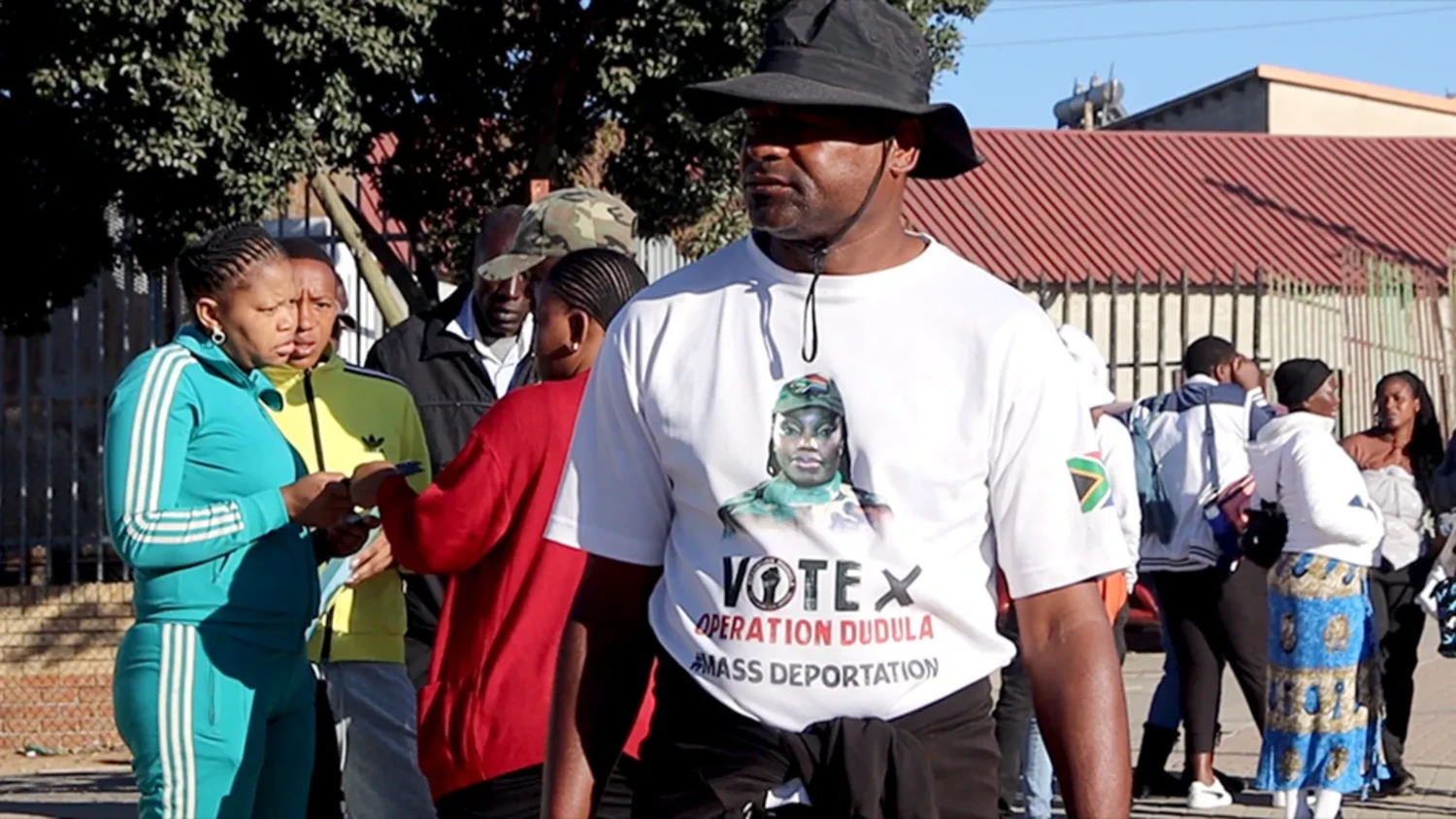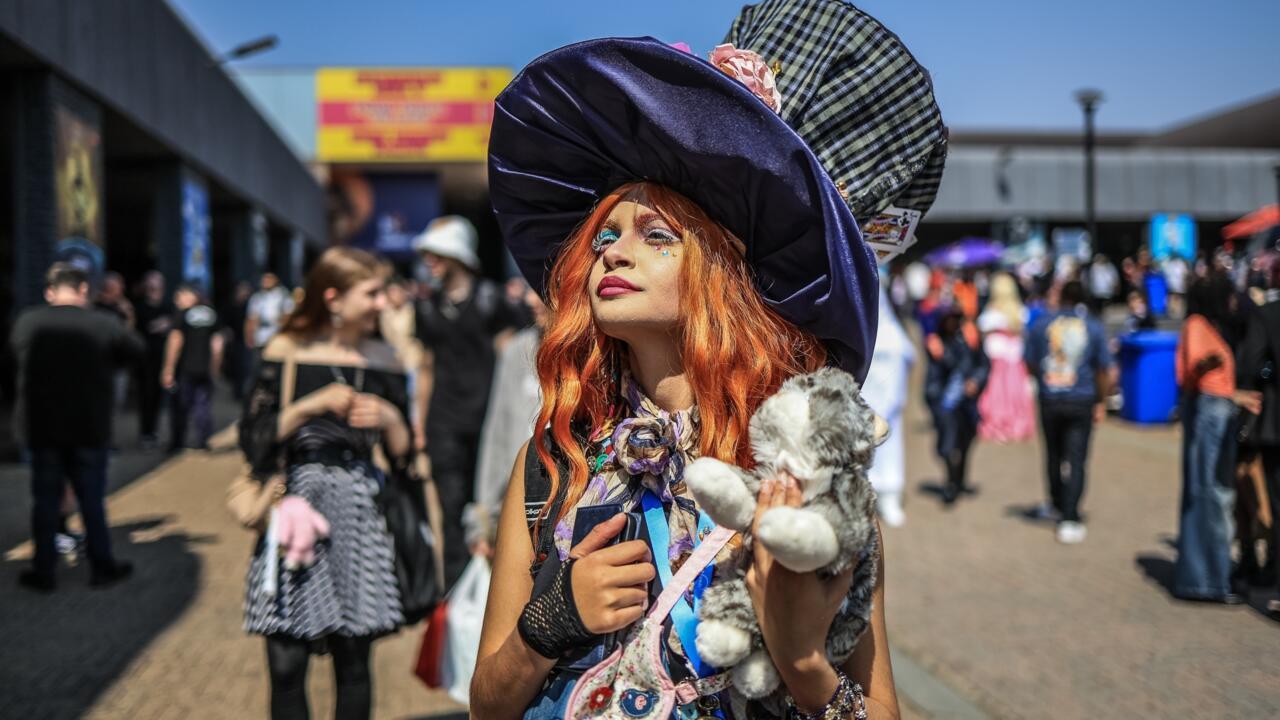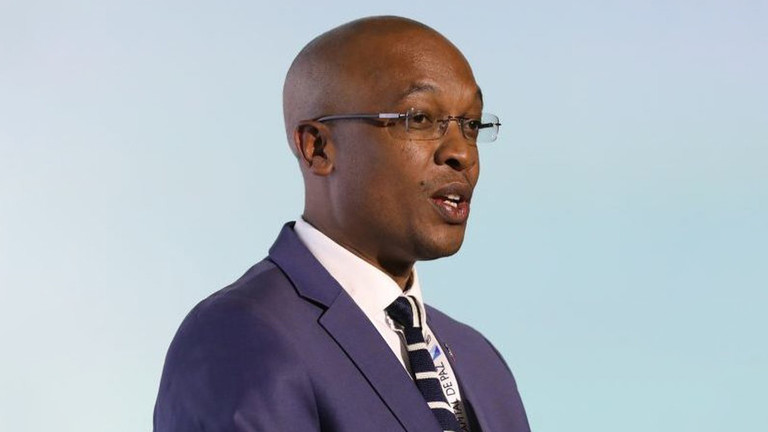
This article is more than
7 year oldShanty town life: ‘They will beat their mothers with a brick’

A RICKETY shack made from scraps of tin sheets and planks of wood sits on top of a hill overlooking waterfront mansions and swanky boats docked on private jettys.
The caving roof is so low that its residents — a family of four — have to crawl to get in and out. The sun is shining but when it rains, water pours through the gaps and turns the hut into a mud pool. Groups of barefooted children loiter on almost every unsealed, dusty street and corner in the neighbourhood.
“The more children you see on the streets the poorer the area,” one local says.
The shack is one of thousands of homes like it in the South African township of Knysna, about 485kms east of Cape Town, and one of millions nationwide.
Affectionately known as ‘the Motherland’, South Africa is a country where stunning landscapes, pristine coastlines, waterfront mansions, and world class facilities exist alongside ubiquitous slums and severely disadvantaged people. It’s the ultimate juxtaposition but it’s extreme poverty and unfavourable conditions in which most South Africans live.


Vast shanty towns, which appear from a distance as seas of glistening tin roofs, stretch as far as the eye can see — in the depths of valleys, across open plains, on the fringes of cities and over mountain tops. When one ends, another soon begins. They’re riddled with crime, violence and drugs but underpinned by the everyday families whose tales of survival, struggle, resilience and hardship exist on a far more overwhelming scale. Few of the township houses are equipped with running water or electricity.
The wait for government housing surpasses a decade in many cases. Access to healthcare and education is limited and employment is almost impossible to come by. They’re not the kinds of places that attract visitors.
Local tour guide Ian Pletzer tells news.com.au that “most South Africans and tourists don’t come to the townships”. “They’re scared,” he says.
But for the residents who occupy the townships — known locally as “informal settlements” because they’re set up on government land — there’s little choice but to stay put.
At the heart of South Africa’s troubles is its 28 per cent unemployment rate, which peaked at a 14-year high in June last year.
According to an expanded definition, which includes people who have given up looking for employment, the figure is 36 per cent.
Even more shocking is the youth unemployment rate — 55 per cent in the second half of 2017. But even those who have enough to get themselves started in the slums struggle to survive.

HAIR SALON OWNER STILL WAITING FOR FIRST CUSTOMER
Happiness, 30, straps her newborn son, Gift, to her back with a towel and goes to work with him every day. Her older children live with family on the east coast of South Africa because she could not afford to care for all of them at once. She’s bursts with pride as she explains that the shipping container she operates her new hair salon from in the Knysna township has running water.
“It comes from the tap,” she tells news.com.au.
But she’s yet to get her first customer. The people who live around these parts don’t often have the kind of the money that affords them basics let alone luxuries like a haircut or colour.
“My salon has been since last month but still waiting for the customers,” Happiness says.
“I decided to have my own shop so I could take care of my three children but it is not easy.
“I also want to look after my child by myself and that’s why I decide to open shop for myself.”
READ: Illegal backstreet abortions in South Africa’s poor townships
READ: Impact tourism: ‘Communities that don’t attract visitors’
Happiness pays $88 AUD a month out of her parenting payments to rent the shipping container she works from. With no customers, she’s rapidly losing money, but she’s reluctant to give up.


She recently moved into “a wood house” with facilities after coming from a shack with no electricity or water. And she doesn’t want to go back.
“If you want a toilet you must go outside even if it’s in the middle of the night,” Happiness says. “That’s why I decide to rent for myself and because it’s secure with my child.”
She spends her days tidying the salon, caring for Gift, “praying to get customers” and waiting.
“Right now I haven’t made a cent but I just be patient because God will make a plan for me,” Happiness says. “It’s not easy but it’s what I want, I have to take it like that. I try my best.
“Because if I’m not doing anything and I sit at home, I can’t afford to feed my baby. So I rent my container and I rent my house.”

South Africa is the continent’s most-industrialised economy, but the severe lack of jobs fuels deep anger in many poor black townships and rural areas that have seen little progress since the end of white-minority apartheid rule.
Land is a hugely divisive topic in South Africa, where 72 per cent of individually-owned farms are in white hands, 24 years after the end of their rule.
By contrast just 4 per cent of such land is owned by black people, according to an audit cited by President Cyril Ramaphosa.
Ramaphosa last week said South Africa must transfer some land from the country’s white minority to the black majority to address the legacy of apartheid. His comments came amid violent clashes and unrest over state-owned land between the two parties as white farmers are attacked, forced from their land and in some cases, murdered.
But it’s the millions of people struggling to make ends meet and live peaceful lives who are baring the brunt of the conflict and the country’s inability to unify. Many South Africans hold concerns that there is no end in sight for younger generations.
READ: Beatings and torture: ‘Five months in solitary confinement on Robben Island’
READ: Table Mountain: Deadlier than Mount Everest
Some organisations, including KET, are trying to help turn that around by increasing opportunities and access to education for children from South Africa’s most disadvantaged families.
Jaydene’s School principal Landi Jacobs has been educating and caring for some of Knysna’s youngest and most vulnerable children at the daycare centre for four years. Most of the children’s families can’t afford to pay for childcare so are often forced to either leave them at home while they work or strap them to their backs and take them along.
Some of the lucky ones aged between 0-7 have been sponsored by KET to attend various preschools it builds and supports in the township. The organisation has also helped local adults, such as Landi, train to become accredited teachers, supporting employment opportunities in the area.
“I started with four children and now I’ve got 31,” Landi says. “I knew it was an idea from God. That’s why I’m still here and have the daycare.”

Landi, who lives in the community with her family including newborn son Junior — whose real name is Luthando, meaning ‘love’ — knows about the hardships that come with growing up in poverty. Her family fosters children, including a 15-month-old girl, who have been neglected by their parents. “They come from all over in this community,” Landi says.
“But this one is from the next town, about 20kms away.
“Her parents are still there, drinking and doing drugs. There’s two siblings also not in their care.” Many children as young as two from poor families who have not yet been sponsored wander the streets without parental supervision. It’s a common sight in many of South Africa’s informal settlements.
LANGA TOWNSHIP ON A SUNDAY
Langa — which means ‘the sun’ — is one of the oldest townships in South Africa.
It’s located on the Cape Flats, 11km southeast of the centre of Cape Town in the Western Cape province. A local driver named Raffique escorts us into the township where hundreds of locals dressed to the nines take to the streets and make their way to church.
The township is buzzing with groups of high-spirited people singing in the streets and the powerful sounds of gospel music bellowing from various churches. Among them are presbyterian and baptist churches and a shiny tin shack that resembles an outback Australian shed. ‘African Gospel Church’: the sign on the structure reads.
Celebrations of another kind are happening simultaneously in private residences throughout the community. Tumelo Kaneli, 38, is drinking beer with relatives and mates in a shack out the back of his sister Beauty Naphot’s home in Langa as techno music and banter blares from the open door. It’s about 11am and they’ve gathered for a “Sunday session”.


With more than 10 people and a newborn baby already living in the small house, it’s crowded — but that’s just how Tumelo likes it.
“I have a degree but no job yet,” Tumelo says. “Not many people in Langa have a job but we do have good times.”
Although that’s not the case for everyone.
Illegal abortions carried out inside dingy tin huts are rampant throughout Langa and other townships like it in the region. Business is booming for the criminals who often masquerade as doctors in the poorest townships and perform or facilitate an estimated 150,000 illegal abortions in South Africa every year. The terminations are achieved without any pre-screening and in unhygienic conditions that don’t meet medical standards.
A news.com.au investigation last year revealed that some illegal operators carry out abortions on pregnant women as far along as six months. “SAFE abortions — pain free,” one flyer stuck to a tin shack reads.


Just around the corner, local freelance artist Thoko Ntshinga, meets with friends outside the community’s arts centre.
She was born and bred in Langa and lives on the exclusive strip of Harlem Ave in Langa, where the township’s most esteemed residents — including sports stars and artists — reside.
“When I talk to people I say I was ‘toasted and buttered in Langa’, I like that,” she tells news.com.au.
“Harlem Ave is the most popular street in Langa where you get everyone who has ever been anybody in the township. It’s where people who can afford to buy houses live.
“We’ve got singers, restaurants, bed and breakfast, a shebeen inn [bottle shop], a family that is the people who do initiations who initiate the boys in the bush, we have a drummer, a shoemaker, we’ve got everything in the street.”

By western standards, Harlem Ave — which boasts one level fibro and brick houses in place of tin shacks — is modest. The area can be dangerous too, and not just because of it’s crime rate. The townships are riddled with asbestos and subsequently have high rates of lung cancer.
“Like any township in South Africa you get the municipal houses and then we grow up in these houses, we end up building shacks at the back of the houses with our own families because there’s nowhere else to go,” Thoko says.
“Then when there is a chance to go somewhere, you go into those communities of what I will call a ‘shackville’ — it’s where people live in shacks, and try to relieve themselves from the influx of every family member living in the same yard.”



The shacks soon become overcrowded too and it’s not long until children can be seen crawling in and out of collapsing huts that overlook million dollar mansions — just a few kilometres away physically, but a world away from anything most of them will ever know.




